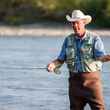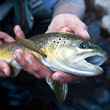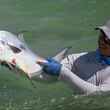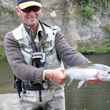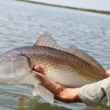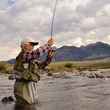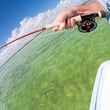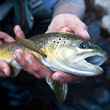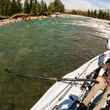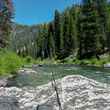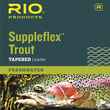For many folks, striped bass conjure up images of fishing the surf, tossing long casts off the terminal end of a jetty or cutting through chop on a boat to chase birds out into the swell. Days spent wading or poling the flats, on the other hand, are commonly associated with bonefish, redfish, tarpon and permit, just to name a few. And while stripers in skinny water certainly aren't a secret, there are plenty of folks who have yet to make the acquaintance of the striped bass on the flats.
Count me on that list. Well, that is, until last week. On my second consecutive annual trip to the preposterously fishy waters that surround Martha's Vineyard -- and after failing to find stripers on the flats on my own last year -- I enlisted perhaps the island's best known fly fishing guide, Jaime Boyle, to help with this year's chase. Jaime and another go-to Vineyard guide, Tom Rapone -- who both run flats skiffs in addition to more traditional center console fishing boats -- are the two guides on the island who spend the most time chasing stripers on the flats. And it's easy to see why. As any experienced fly angler knows, taking the blind factor out of the equation ups the adrenaline. Sight fishing is simply more fun.





